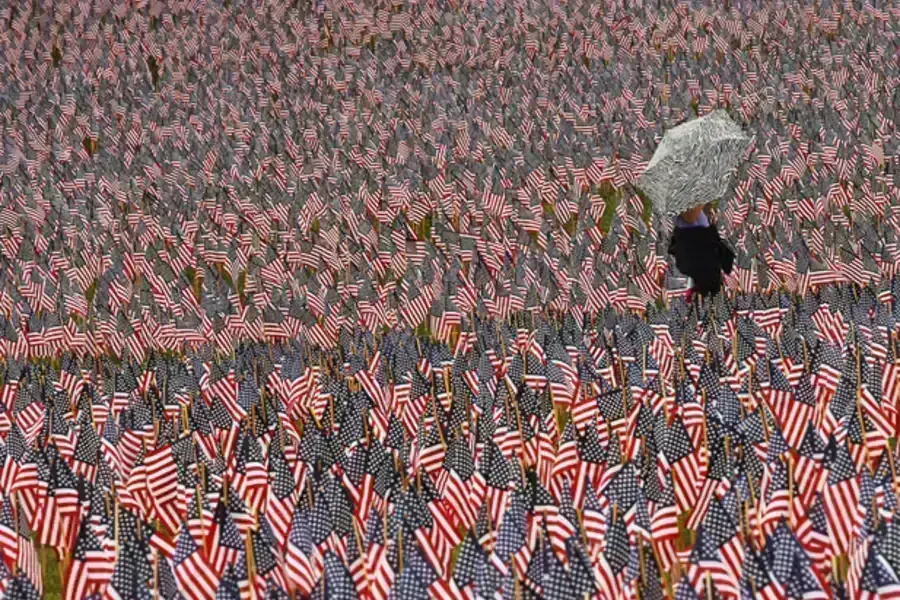Happy Flag Day!

Happy Flag Day everyone. Two hundred and thirty-six years ago today, the Second Continental Congress adopted the design that became the American flag. So Happy Birthday, Stars and Stripes!
Here are a few facts about the flag:
- Most colonial flags did not feature stripes. They instead featured “beavers, pine trees, rattlesnakes, anchors, and various other insignia…affixed to different banners with mottoes such as ‘Hope,’ ‘Liberty,’ or ‘Appeal to Heaven,’ and spoke to the first colonists struggle with the elements in the new territory.”
- The flag that flew in Philadephia on July 4, 1776 was the Grand Union Flag. It had thirteen horizontal stripes representing the colonies, and it bore the red cross of St. George of England with the white cross of St. Andrew of Scotland.
- Betsy Ross did make flags in Philadelphia in the 1770s, but she almost certainly did not make the first American flag. The story that she did was first told by her grandson in 1870, or ninety-three years after the flag debuted. His evidence? Family stories.
- Red, white, and blue appear to have been chosen as the flag’s colors because those were the flag colors that the colonials were most accustomed to; after all, they are the colors of the Union Jack. Nonetheless, many people think that the color choice was deliberate and symbolic. That’s probably because five years after the first flag design was chosen, Charles Thompson, the secretary to the Continental Congress, wrote in a report about the creation of the Great Seal that the colors had specific meaning: “The colors of the pales (the vertical stripes) are those used in the flag of the United States of America; White signifies purity and innocence, Red, hardiness & valour, and Blue, the color of the Chief (the broad band above the stripes) signifies vigilance, perseverance & justice.”
- No one agrees on why the five-pointed star design was chosen. Francis Hopkinson of New Jersey, a signatory of the Declaration of Independence, is thought to have conceived of the stars in the flag. One historical oddity: the stars on the ceiling of the Oval Office have eight points. No one knows why.
- The flag has been updated twenty-six times to increase the number of stars as new states joined the union. Today’s flag was approved on July 4, 1960.
- Crews from Apollo 11, 12, 14, 15, 16, and 17 each planted an American flag on the moon. The six flags remain there today. American flags have been placed at the North Pole and the top of Mount Everest.
- Over 90 percent of American flags are made in the United States. The United States exports over $400,000 in flags to countries around the world, over half of which go to Mexico.
- President Woodrow Wilson first proclaimed Flag Day by executive order in 1916. In 1949, President Harry Truman signed an Act of Congress formally establishing National Flag Day. Many places have claimed to be the birthplace of Flag Day, but on June 14, 2004, Congress unanimously voted that Flag Day originated in Ozaukee County, Waubeka, Wisconsin. (In case you are wondering, Waubeka is located 35 miles north of Milwaukee.)
- Pennsylvania is the only state to celebrate Flag Day as a state holiday.
- Folded properly, the flag is shaped into a triangle with only the stars showing. It takes thirteen folds to complete.
- Specific rules govern how the flag should be displayed. If you want to brush up on them, try here and here.
If you have any other interesting facts about the flag, please post them in the comments below.
 Online Store
Online Store
